Alumni profiles
In this page you will find profiles of UNC Physics and Astronomy alumni that are currently employed in a variety of sectors such as
Manufacturing
Data Science
Software
Academia
Finance
Biomedical
Aerospace
National Labs.
Employment sector: Manufacturing
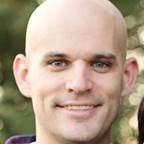
Cary Tippets
Cary received his PhD in Material Science in 2017. He immediately went to work at Intel as an R&D Process Engineer in the chemical mechanical planarization department. There he developed first-of-kind processes to enable the next generation of CPUs. His main focus is on variation reduction through data analytics and development of optical algorithms to deliver precision control. As a Senior Engineer, Cary leads a team of engineers to identify and fix process inefficiencies to enable high volume manufacturing. Cary applies lessons learned in physics on a daily basis, breaking down the problem to basic building blocks, ignoring erroneous information, developing models to fit the data and solving the problem’s root cause. You can hear more from him in the Careers in Manufacturing panel recorded in April 2021.
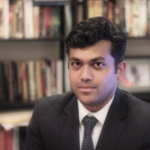
Rudresh Ghosh
Rudy Ghosh is the Global Director of Technology Sales and Commercialization at PulseForge Inc. In his role, Rudy spearheads the strategic development of PulseForge’s innovative technologies for commercial success. Rudy’s broad technical expertise enables him to provide a strategic vantage for the technical leadership of the corporation. As the dedicated Voice of the Customer, he is driven to provide exceptional results for PulseForge’s customers. In his previous role, as the Technical Program Lead at NovaCentrix (PulseForge’s parent company) Rudy applied his deep technical expertise and commitment to excellent customer experience to direct the development of the groundbreaking and award-winning PulseForge Inline. Rudy obtained his PhD in 2013 doing research with Prof. Lopez, followed by a postdoctoral position at the Univ. of Texas at Austin where he led the 2D materials synthesis and characterization facility. He joined NovaCentrix as an Applications Development Engineer in 2016. What he particularly likes about his work is, “constantly having a front row seat to the most amazing technologies being developed across the globe. From wearables, to automotive to aerospace to healthcare. Working with customers at different levels of product, technology and business development allows me to learn about what’s to come a few years in advance.” You can hear more from him in the Careers in Manufacturing panel recorded in April 2021

Derek Vermeulen
Derek Vermeulen received his PhD in physics in 2015, having done research in experimental condensed matter physics. When he graduated he was hired by Sencera Energy Inc. in Charlotte, NC (a company founded by another UNC alum, Rusty Jewett BS 1990) as a Senior Research Scientist. While there he worked on the design, development, fabrication, testing and implementation of Sencera’s technologies including heat pumps and generators, gas separators, and solar power concentrators. In 2019 he co-founded Tech Fit, where he now serves as Principal Engineer. The start-up company produces gas-infused beverage dispensing systems, including one that gives a glass of iced tea a head like a draft beer! He says about his career to date, “Physics gives you the foundation to go and do anything.” You can hear more from him in the Careers in Manufacturing panel recorded in April 2021.
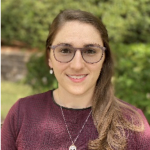
Allison Hartman
Allison completed her PhD in 2017 and went to work at Leica Microsystems, first as an Optical Test Engineer and now as a Product Development Engineer. She started her career designing, developing, and transferring to production measurement systems for Fourier Domain Optical Coherence Tomography (a medical imaging technique), and works to increase the visibility of this technology. She then transitioned into algorithm engineering and developed algorithms to aid ophthalmic surgical decision making. While continuing algorithm development, she is also a project manager and product owner leading a cross functional team to continue to improve surgical outcomes using advanced algorithms. Her work at Leica builds on project organization, adaptability, and technical foundation she learned while at UNC. She says about her career so far at Leica, “I am grateful I get to use my algorithm development work to improve outcomes for patients undergoing ophthalmic surgery.””
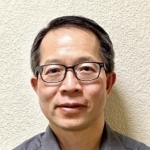
Lawrence Pan
Lawrence finished his BS in 1985 and then went to Stanford for a PhD in Applied Physics. After a post-doc at Lawrence Livermore Laboratory, he worked as a Staff Scientist at Sandia National Labs for several years. In 1997, he transitioned to industry, first as a Technology Development Manager at Candescent Technologies where he managed technology objectives for a group of physicists working on a novel field emission flat panel display. From there he moved to Molecular Nanosystems as Director of R&D, developing carbon-based nanotechnology. This eventually led to work in the field of energy storage (batteries and supercapacitors). He took that expertise into subsequent positions at Qnovo (as a Senior Scientist), Fitbit (as a Principal Battery Engineer), and now that the company has been acquired by Google his title is Engineering Manager as he continues to head the Battery Team. He says, “My physics background gives me a somewhat unique perspective to a job that traditionally requires loads of engineering and chemistry, things I’ve picked up along the way, and the emphases on first principles and math have served me well.”
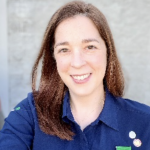
Jessica Owens-Mawson
Jessica completed an MS at UNC in 2002. She took her expertise in condensed matter and materials physics to a job as a Research Scientist at United Solar Ovonics where she designed, developed, and characterized next-generation thin film Silicon devices for photovoltaic applications. This allowed her to develop in-depth expertise in various materials deposition technologies as well as optical measurements for quality analysis. She managed a team for production assembly and instituted quality improvement measures as well as served as Safety Coordinator while at United Solar. She is now a Material Engineer at Ionbond IHI group, where she performs materials and metallurgical sample preparation and analysis using a variety of techniques. She says about her broad experience and its relation to her physics preparation: “A background in physics provides a sturdy foundation that can allow one to easily segue to a broad range of fields.” You can hear more from her in the Careers in Manufacturing panel recorded in April 2021.
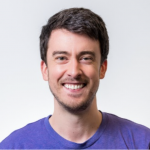
John Tumbleston
John did research with Prof. Lopez on solar cells, finishing his PhD in 2011. He spent two years as a postdoc at NCSU doing additional solar cell work at the Advanced Light Source in Berkeley. John is now R&D Director at Carbon since starting as the company’s first Research Scientist in 2013. Carbon is a 3D printing technology company cofounded by Joe DeSimone while he was a professor in the Chemistry Dept. at UNC. John’s work has helped launch Carbon’s HW, SW, and Materials products. He was also lead author on Carbon’s 2015 Science article detailing the printing process and has been awarded numerous patents. He says this about seeing a small start-up grow from 10 to 500 employees: “Don’t be afraid to take risks. Trying an idea and failing quickly is always the best way to get to the right answer” You can hear more from him in the Careers in Manufacturing panel recorded in April 2021.
Employment sector: Data science
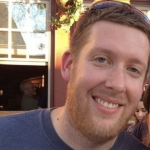
Sean MacMullin
Sean is Director of Data Analytics at Picarro, where he develops data analytics and software solutions for the natural gas industry. He received his PhD in nuclear physics in 2012, and joined Picarro in 2014 after a stint at a postdoc at Purdue University. He now has over a decade of experience as an engineering leader, developing hardware and software for research and commercial applications. He says this about how his physics education prepared him for a data science career: “My physics education provided me with the technical foundation and collaboration skills that I needed to be successful developing my career as a data scientist and engineering leader.” He spoke about his work in the Careers in Data Science panel held in November 2021 (a link to the recording is available elsewhere on this webpage).
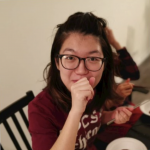
Du “Wendy” Cheng
Wendy Cheng is a Data Scientist at Fidelity Investments. Before that she worked in data science in retail, at Lowe’s and the Walgreens Boots Alliance. Along the way she completed an MS in Computer Science at the Univ. of Chicago, but she started by double-majoring in physics and European history at UNC, graduating in 2017. She spoke about her work in the Careers in Data Science panel held in November 2021 (a link to the recording is available elsewhere on this webpage). She notes that math skills are particularly important in her field, saying “basic calculus and linear algebra helped me through a lot of interviews and are fundamental to my understanding of everyday work.”
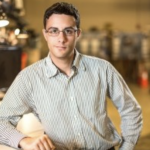
Jeffrey Cohen
Jeff Cohen completed his BS in physics in 2010, after receiving (among other honors) the Outstanding Undergraduate Teaching Assistant award. He then spent seven months with the Computer Task Group as a Hardware Test Engineer contracted to IBM, where he tested service updates for the firmware and device drivers of the company’s various server products, wrote reports detailing the results of testing and analysis of errors and bugs as well as debugging hardware issues. He then moved on to FDH as a Signal Analyst, where he analyzed data from nondestructive evaluation (NDE) of bridges and dams using multiple regression analysis, machine learning and data mining; he also maintained the field equipment. He provided management and oversight of the analysis techniques and developed proposals for research and production opportunities for the company. He built on all that bridge work when he moved to Bridge Diagnostics Inc. as NDE Division Manager. He continues to conduct a wide range of field tests and do dynamic and digital signal processing and analysis as he integrates machine learning and other statistical methods into NDE, including finding solutions to the Big Data challenges the field faces. He says about his career to date, “It’s mostly been about keeping an open mind for the kind of problems I am challenged to solve and making sure the roles I pursue actually let me use the tools and techniques I want to be using every day.”
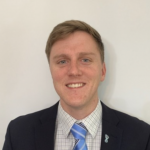
Riley Buchanan
Riley got his bachelor’s in 2017 (with a double major in Hispanic Literatures and Culture and a minor in Neuroscience) and taught at a high school in Spain for a couple of years. He then went on to Georgia Tech for an MS in Analytics before joining Credit Suisse as a data scientist, where he focuses on building tools using machine learning to support teams across the bank. His physics background helped him get into data science because of the rigorous mathematical training in the classroom, and the focus on using the scientific process to solve problems in the lab.”
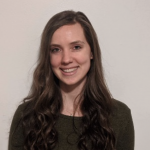
Alex Burnette
Alex completed a BA in Physics in 2018. She is currently a Data Analyst at Oracle and serves as an officer in the US Army Reserves. As a Data Analyst at Oracle, she transforms, analyzes, and visualizes data to identify trends that provide key insights to high level stakeholders. In the Army, she has served as an Executive Officer and currently serves as an Intelligence Officer. As an Executive Officer, she coordinated training for a large number of personnel involved in a variety of departments. As an Intelligence Officer, she identifies patterns and correlations between geospatial and behavioral data to provide intelligence oversight and physical security to her unit. She likes the combination of military and civilian work because of the vast array of opportunities she’s been able to experience. “I get to experience both the management and non-management side of work, which keeps me on my toes. My leadership skills from the Army translate into marketable, leadership skills for my team in Oracle, while working under different management styles in the corporate world gives me insight into how to be a better leader to my junior soldiers. Having to perform in different work environments provides great synergy.”
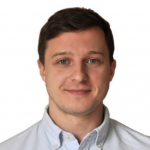
David Kaleko
David is a Senior Manager and Principal Research Scientist at Motorola Solutions. He spoke about his work in the Careers in Data Science panel held in November 2021 (a link to the recording is available elsewhere on this webpage). He completed his BS in 2011 and then got a PhD in experimental particle physics at Columbia in 2016. He joined Motorola as a Data Scientist and has been there ever since. He says students should consider exploring data science as a career path, and if it even seems remotely interesting, they should start preparing now by integrating data science tools and skills into their assignments and research. According to David, “you may be surprised how big the overlap between physics and data science can be.”
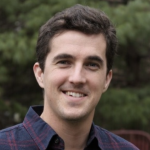
Andrew McAllister
Drew got his PhD in 2019 doing research with Prof. Branca and now works as a Data Scientist at Afiniti, a company that uses artificial intelligence to discover interpersonal behavior patterns to allow clients in healthcare, telecommunications, travel, hospitality, utility, insurance and banking better pair employees with customers. He spoke about his work in the Careers in Data Science panel held in November 2021 (a link to the recording is available elsewhere on this webpage). He describes his path from physics research to data science this way: “Data Science has allowed me to use a lot of the same problem-solving I enjoyed in physics in a wide variety of applications. As a physicist, it has a relatively low barrier to entry. I would encourage students who think they might be interested to just pick a project and try it.”
Employment sector: Software
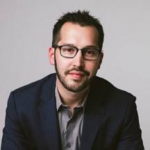
Eric Hirsh
Eric got his BA in 2006 with a double major in physics and music. Since then he has pursued a double career in software and as a professional jazz musician and band manager. His first job after college combined the two, when he worked at local startup, Zenph Sound Innovations, managing a research and development team working to virtually model and re-create musical instruments and human musical performance behavior. Since then he has worked at a series of software companies, small and large, focused on helping marketers harness their owned data to personalize communications in ways that respect privacy and consent, in roles progressing from customer support to solution consulting to product management. He is currently a Senior Product Manager at Simon Data. You can learn more about his music at www.erichirsh.com. Eric says that his physics background prepared him well for his software career “because it instilled the fundamentals of thinking about systems, the interconnectedness of things, and the curiosity of the scientific method where one passionately follows a hypothesis but is humbled to be disproven by new insights.”
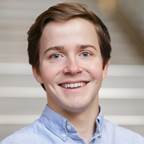
Max Gordon
Max got his BA in physics in the Quantitative Finance track in 2019, having spent the summer of 2017 at the London School of Economics and Political Science in their Investments and Securities program. He then spent a year at the Fuqua School of Business at Duke earning an MS in Quantitative Management and Business Analytics before becoming a Business Intelligence Engineer at Amazon. He has now transitioned to Software Development Engineer. Although he has a lot of education in business, he finds the physics part of his background to be important because, “through the physics program I learned the essential problem skills that I have used everyday at my job and developed how to write efficient and scalable code in a team environment.”
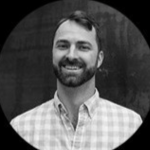
Zane Beckwith
Zane received both his BS (2007) and his PhD (2014) from UNC. He then became a Senior Software Engineer at Lime Brokerage LLC for two years before moving on to be a Principal Product Architect and Director of Security at Xaptum. There he was involved with designing and building many parts of the core identity/access and networking infrastructure, including authentication gateways, group signature protocols, interfacing with secure hardware elements, and forwarding architecture. After Xaptum, he spent a short stint at the blockchain company DFINITY as a Cryptography Engineer. Most recently, he works at Sandbox Technologies, a startup focusing on near- and intermediate-term quantum information processing technologies. He says of his career: “As a student, I didn’t understand the opportunities my education would open for me. Thinking like a physicist has helped me be productive in many other fields, and when people hear of my background it earns me instant attention and respect.”
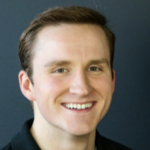
Evan Gertis
Evan completed his BS in 2017 and then went to Georgia Southern Univ. for an MS in Computer Science. Along the way he worked at Research and Engineering Development, Inc. on drone technology for the U.S. Navy, and at JHP Autoglass and Powerserve. He is now a Penetration Tester at NetFoundry, doing security-focused software development. “As a security engineer, I enjoy developing automated tooling and research for NetFoundry. I attribute my success to mentors like Dr. Hugon Karwowski. He taught me how to think beyond myself.”
Employment sector: Academia
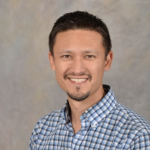
Brian Collins
Brian finished his PhD in 2009 and spent three years as a postdoc at NCSU, followed by two years as a National Research Council Postdoctoral Fellow at NIST in Gaithersburg, MD. He then became a faculty member at Washington State University and has since been promoted to Associate Professor. His research is highly interdisciplinary, straddling physics, materials science, electrical engineering and chemistry. He specializes in developing and using synchrotron X-ray techniques to investigate carbon-based materials designed to have novel optoelectronic properties. He strives to understand how interactions of organic molecules and polymers in aggregate and at interfaces govern the creation, transport, and annihilation of excited and charged states that result in power generation/storage, illumination, sensing and information processing. He likes the combination of research and teaching that his position at Washington State provides because, “I love to share the excitement of learning and discovery with inquisitive and energetic minds.”
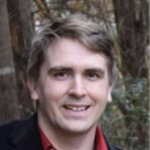
Carl Ziegler
Carl worked with Prof. Law on exoplanets for his PhD, which he finished in 2018. He was a Dunlap Postdoctoral Fellow at the Univ. of Toronto for two years, and then became and Assistant Professor at Stephen F. Austin State University in Texas. He is also the Director of the SFA Observatory there, which is being updated to perform automated astronomical observations. He continues his interests in observational astronomy, especially planets orbiting other stars outside of our solar system. His research uses robotic telescopes to determine what these distant worlds are like, including whether they may be suitable for life. He also uses large telescopes on remote mountains to explore the stellar environment in which these planets are found. He finds working at SFA to be especially satisfying because, “it gives me the opportunity to utilize the skills and knowledge developed during my time at UNC while also training the next generation of scientists
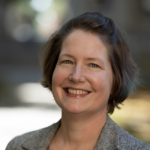
Susan Lehman
Susan completed her PhD in experimental condensed matter physics in 1999, and after a stint as a postdoc at NIST she joined the faculty at the College of Wooster in Wooster, OH. She is now the Victor J. Andrew Professor of Physics, and has served as Chair of her four-person department. A liberal arts college feels like home to her, as she did her undergraduate years at Goshen College. Mentored undergraduate research is a major focus at Wooster—all the students at the College of Wooster complete a senior thesis—and the department has a long-running NSF-REU program, so she has mentored many students in her research lab, which now focuses on granular materials. Although the time scale is slower, much of the work remains publishable; her most recent publication includes contributions from eight undergraduate students over the course of several years. About being a faculty member at a liberal arts college, she says: “I find it satisfying to develop close relationships with students over the course of their time at the College as they develop both their skills and their confidence. I especially love it when students who are not as strong in their coursework really shine and surprise me when they flourish at research as they complete their senior thesis.””
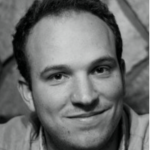
Matt Bayliss
Matt got his BS from UNC in 2003 and went on to complete a PhD at the Univ. of Chicago in 2011. He held postdoctoral appointments at Harvard and MIT and was a Faculty Fellow at Colby College. He is now an Assistant Professor at the Univ. of Cincinnati, where he does research in observational astrophysics and cosmology. At UNC he had the opportunity to work on the construction and commissioning of the Goodman Spectrograph on SOAR, and the first generation of PROMPT robotic telescopes at CTIO. Those hands-on experiences inspired him to pursue a career in astrophysics research.
Employment sector: Finance
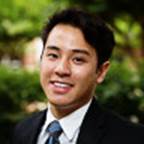
Richie Nguyen
Richie received his BA in 2018 in the Quantitative Finance track, and followed that with a Master’s in Accounting from UNC. He was then hired by Credit Suisse as a Structured Portfolio Analyst in the Investment Banking Division where he assists in the structured hedging program for large corporate exposures. As a Structured Portfolio Analyst, he handles key activities for building trades through updating rigorous models and for tracking distressed corporate names through close communication with research and legal teams within the bank. The quantitative and computational skills gained from a physics background especially help in constructing detailed financial models as well as translating complex concepts into understandable ideas that investors are able to grasp.
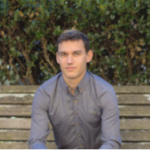
Harry Heyworth
After receiving his bachelor’s degree in 2018, Harry went to work at Solovis, a financial technology company. He spent two years there primarily working in client relations, and learned a lot about the financial services industry there. He then moved to the investment management company for the Univ. of Virginia, UVIMCO, where he is currently an Investment Operations Associate. That job requires lots of analytical and communications skills. Harry says of his path from physics to finance, “Studying physics expanded my analytical and problem-solving skills necessary for tackling the challenging projects involved in my career”.”
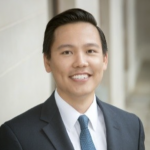
Victor Zhao
Victor completed a BA in 2015 with a double major in physics and economics. He went on to receive an MS in corporate finance and investments from Washington Univ. in St. Louis. He worked for the Washington University Investment Management Company as an Investment Analyst for a few years before moving to Mercer. Most recently he has been an Investment Associate at the Kaiser Family Foundation since the beginning of 2021. His take on how his physics background helped him in his career in finance is, “approaching complex problems from first principles.”
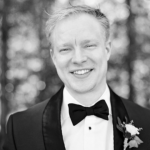
Erik Forseth
Erik’s research at UNC involved analytic and numerical modeling of binary black hole systems with extreme mass ratios. Upon completing his PhD in 2016 he went to work for Graham Capital Management LP as a Senior Quantitative Research Analyst, working on quantitative investing in futures and foreign exchange markets. He notes that black holes and foreign currencies are not so different: “the analytical and computational skills I acquired during my graduate work left me well-prepared for the jump into quant finance.”
Employment sector: Biomedical
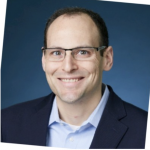
Jacob Forstater
Jacob completed his PhD in 2013 and then spent three years as a postdoc jointly appointed between NIST and Columbia Univ. There he developed unique polymer tags for single-molecule DNA sequencing technology and developed, refined, and validated novel algorithms for characterizing transient events in single-molecule experiments. He then moved to Merck and is now an Associate Principal Scientist who develops new technologies for synthesis of pharmaceutical ingredients. He says about being a physicist in a pharmaceutical company, “physics provides me with a unique and broadly applicable scientific background which has enabled me to work across disciplinary boundaries. Working in pharmaceutical R&D, I perform cutting edge science as part of a large multidisciplinary team and collaborate to rapidly translate our innovations into technologies which deliver lifesaving medicine to patients now.”
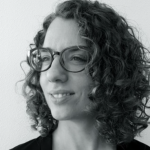
Nicole Estrich
Nicole completed her BS in Physics from UNC in 2010 and went on to NCSU for a PhD in Materials Science & Engineering. When she graduated in 2016 she went to work for BD, a medical technology company focused on improving medical discovery, diagnostics and the delivery of care. Nicole joined BD as a Senior Engineer, and a member of BD’s Technology Leadership Development Program, where she has innovated on projects that involve equipping surgical and interventional procedures, and helping to improve medication management of infusion devices and software. These experiences, as well as extracurriculars such as leading summer interns and participating in diversity & inclusion events, have led Nicole to her current position as Senior Manager, Research & Development for new medication dispensing hardware projects. She says about moving from engineering to management, “It’s no longer about I, but about we. Together, we can make a positive impact on the lives of caregivers and patients.”
Employment sector: Aerospace
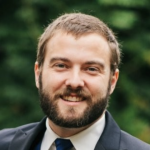
Mitchell Cobb
Mitchell received his BS in 2010 and then went to UNC-Charlotte for an MS in Mechanical Engineering, followed by a PhD in Mechanical and Aerospace Engineering from NCSU where his thesis focused on optimal control algorithms. He now works as an engineer on the GNC (guidance, navigation and control) algorithms for the New Glenn rocket at Blue Origin in Seattle. He says about how his physics degree prepared him for an engineering career: “I love my job. Every day I get to work on building the next generation of reusable space systems. I like to think that working in GNC means creating the “brains” of a robotic rocket pilot. The algorithms we create automatically make decisions about things like where to point the engines, which attitude thrusters to fire, when to deploy payloads, and every other task that an orbital class rocket needs to perform. Designing these algorithms requires a good understanding of physics, a lot of math and programming, and very good technical problem solving skills. My physics degree from UNC laid an extremely solid foundation in all of these and it taught me many of the tools and skills that I still use on a daily basis.”
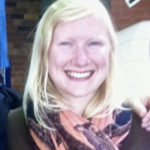
Chelsea MacLeod
Chelsea worked with Prof. Reichart’s group as an undergraduate and completed her BS in 2006. She also was a presenter at the Morehead Planetarium while at UNC. She then went to the Univ. of Washington and completed a PhD in Astronomy in 2012. Chelsea had a series of postdoctoral appointments at the U.S. Naval Academy, the Univ. of Edinburgh Institute for Astronomy and Royal Observatory, and the Smithsonian Astrophysical Observatory. She is now an Image Processing Engineer at BlackSky, a company that uses small satellites to provide global monitoring services. She describes her transition from basic research to the private sector this way: “I was surprised at how applicable the concepts and skills I learned from my studies has been to industry. Also, having a mentor who I trust and inspires me has been essential!”
Employment sector: National labs
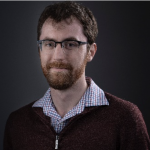
Ben Ryan
As an undergraduate at UNC Chapel Hill, Ben participated in research with Prof. Karwowski on assay methods involving nuclear resonance fluorescence, and with Prof. Heitsch on numerical methods for radiation transport and GPU acceleration for an astrophysical fluid code before completing his BS in 2012. The daily rhythm of software development for physics really appealed to him, so he applied to graduate schools with strong numerical astrophysics programs and went to study at the University of Illinois at Urbana-Champaign under Charles Gammie as an Illinois Graduate Fellow. There he wrote a relativistic radiation magnetohydrodynamics code for simulating near-horizon dynamics of accretion flows onto black holes. Using this code, he produced the most physically complete models to date of the plasma around M87, the black hole imaged by the Event Horizon Telescope Collaboration, of which he was a member. For this work, he shared in the 2020 Breakthrough Prize in Fundamental Physics. After completing his PhD in 2018, he went to Los Alamos National Laboratory as a Director’s Postdoctoral Fellow where he developed a new method for radiation hydrodynamics that is accurate and stable in the extreme environments around more rapidly accreting black holes. He is now a staff scientist at LANL, where he continues his astrophysics work as well as contributes to large software projects in the lab’s Advanced Simulation and Computing program, which develops simulation capabilities to analyze and predict the performance, safety, and reliability of nuclear weapons.
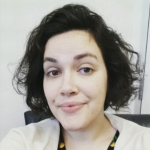
Laurel Burk
Laurel completed her PhD in 2013 doing research with Prof. Zhou. She then went to work for the Food and Drug Administration’s Center for Devices and Radiological Health, where she is now Assistant Director in the Diagnostic X-ray Systems Branch and supports and manages a team of scientists, physicians, and engineers whose mission is to ensure the safety and effectiveness of diagnostic X-ray imaging devices and electronic products. She feels that her physics degree prepared her for this career because her research project in carbon nanotube based X-ray technology inspired a love of medical imaging technology which she now pursues in her public service career, and working with a highly-collaborative research group equipped her with skills she uses every day as a manager of a professional team.
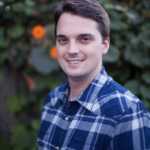
Matt Buckner
As a graduate student, Matt was awarded the DOE NNSA Stewardship Science Graduate Fellowship, and he studied the nucleosynthesis of the rare stable oxygen isotopes with Prof. Iliadis at TUNL’s Laboratory for Experimental Nuclear Astrophysics (LENA). During the Summer of 2010 while a DOE fellow, Matt interned at Lawrence Livermore National Laboratory’s Center for Accelerator Mass Spectrometry. He
completed his PhD in 2014 and accepted a postdoctoral appointment at LLNL studying neutron capture reactions on the minor actinides. In 2017 he joined LLNL’s Weapons and Complex Integration directorate staff, and he is currently an experimental physicist and the directorate’s representative to the laboratory’s postdoc program board. As a WCI Experimental Physicist, Matt brainstorms new ways to tap the potential of priceless experimental physics data, and he leads a multidisciplinary team of researchers to leverage these data in support of the laboratory’s stewardship science mission. He is passionate about hands-on experimental research and solving complex problems with advanced computational tools. He finds his work at Livermore exciting and gratifying because it provides him with an opportunity to contribute to national security through cutting-edge STEM research and development.

